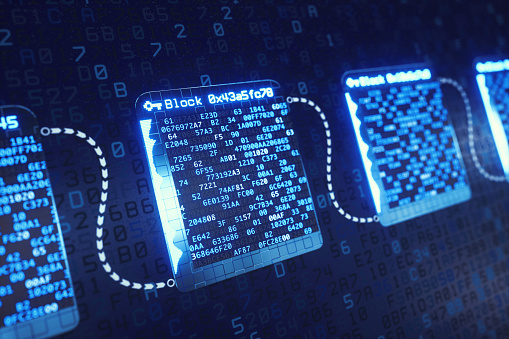How Does Blockchain Work?
Let’s understand first the meaning of blockchain and what it comprises..
Blockchain refers to a “chain of blocks.” The blocks contain time-stamped digital records of any transactions or exchange of data that takes place via the technology. Blockchain functions as a decentralized and distributed ledger, which implies that there is no central authority in charge of the data. “Block” mainly stores the information and distributes it to various other members in the transaction network, known as nodes. Whenever a new transaction takes place it leads to the formation of block adding to blockchain.
Blockchain offers multiple advantages like transparency and security, which is why it is a very suitable technology for the payments and finance industry. Let’s learn to go more in deep to understand the working and advantages of blockchain in the payment industry.
How Does Blockchain works in Payments?
- Cross border Payment
- Peer to peer (P2P) transfer
- Trade finance
- Digital identity verification
Cross-border Payment: Cross-border payments are currency transactions between people or businesses that are in different countries. The money sender typically will choose a front-end provider, such as a bank or a money transfer operator to initiate the payment. The receiver then receives the payment via the medium specified by the sender. There are numerous intermediaries in the system, which leads to commissions ranging from 3-20% of the amount being transferred.
- Fast
- Less expensive
- Transferred without the need for any third-party authorizations.
Numerous banks and companies plan to get blockchain payment systems implemented in their business to conduct safe and quick cross-border payments.
Peer to Peer transfer (P2P) : Peer-to-peer transfers enable users to transfer funds directly from their accounts to another person. Let’s understand this by a simple example
- John wants to send $3000 to his friend Anderson staying in Germany, similarly Jennifer has to send $1000 to her friend Monica staying in brazil using peer to peer method it makes it more convenient and less inclusion of various other deduction of money.
- If they are all participants of the same P2P platform, the system will match everyone and ensure the funds are transferred smoothly. In essence, John’s $3000 goes to Anderson and Jennifer’s $1000 Monica This effectively means if enough people participated, money would never have to leave the system. A payment would become just a database entry, crediting one account and debiting another. This system comes with a huge number of benefits over traditional transaction methods.
Trade finance: Trade Finance means financial activities related to international trade. Trade finance struggles with the vast amounts of paperwork pertaining to payment records and invoices, bills, credited amounts, etc. Carrying out these procedures takes up a lot of time as several copies of the same paperwork are required for multiple uses, and any manual errors cause the complete documentation to go wrong. With blockchain payment systems, trade finance paperwork can become more manageable as,
- Providing payment certainty to sellers by automating payment methods.
- delivery assurance to buyers through trade asset tokenization
- Mitigating risks and increasing financing revenues for banks through payment instrument digitization.
Digital identity verification: Digital identity is a convergence of offline and online identities, where the latter refers to those stored or used by computer systems and embedded software (IoT). A digital identity can be assigned to an individual, a legal entity or company, and even assets.
With blockchain payment systems, the verified credentials of a person can be securely saved in the blockchain, and as blockchain is immutable, the authenticity of the data is also ensured. This will speed up the digital identity verification as the users won’t have to put in their verification credentials repeatedly to make payments. It will also give users the authority to choose with whom they wish to share their verification credentials.
To learn more about Blockchain visit Unifinity Institute and subscribe to courses.





